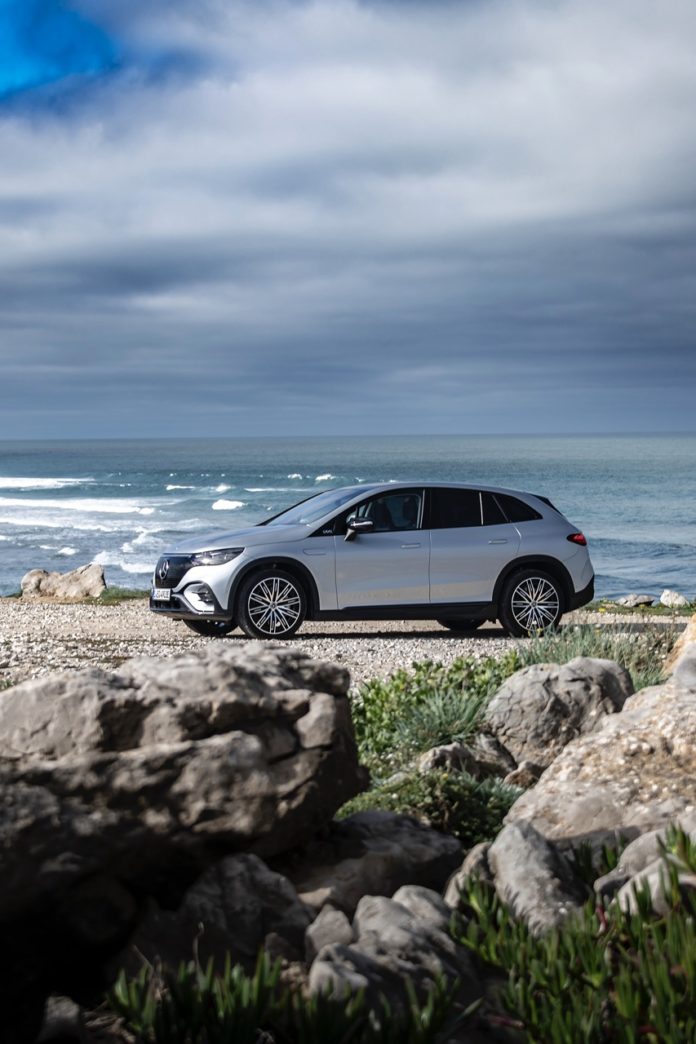Off the coast of Portugal near Lisbon, a vast underwater canyon tosses up some of nature’s fiercest waves at the cliffs at Nazaré. Surfers set records here on dizzying curls that can unleash thousands of kilojoules of energy. In 2020, Sebastian Steudtner rode an 86-foot wave for nearly half a minute toward the Praia do Norte on surf created by Hurricane Epsilon.
I’ll pass on that nightmare fuel, thanks. I encountered nothing nearly so frightening on my test drive of the 2023 Mercedes-Benz EQE SUV on the roads overlooking that beach, unless you count bad lane hygiene by a Renault Megane Scénic. On a daylong drive at moderate speeds, back and forth from Lisbon, the new electric Benz utility vehicle set no record heights in charging or range, but its battery-electric powertrain proved efficient enough to draw out a finer point: some EV drivers want the finery of its elegant cabin and a usefully large cargo hold, not to mention the badge on the front end.
2023 Mercedes-Benz EQE 350+ SUV
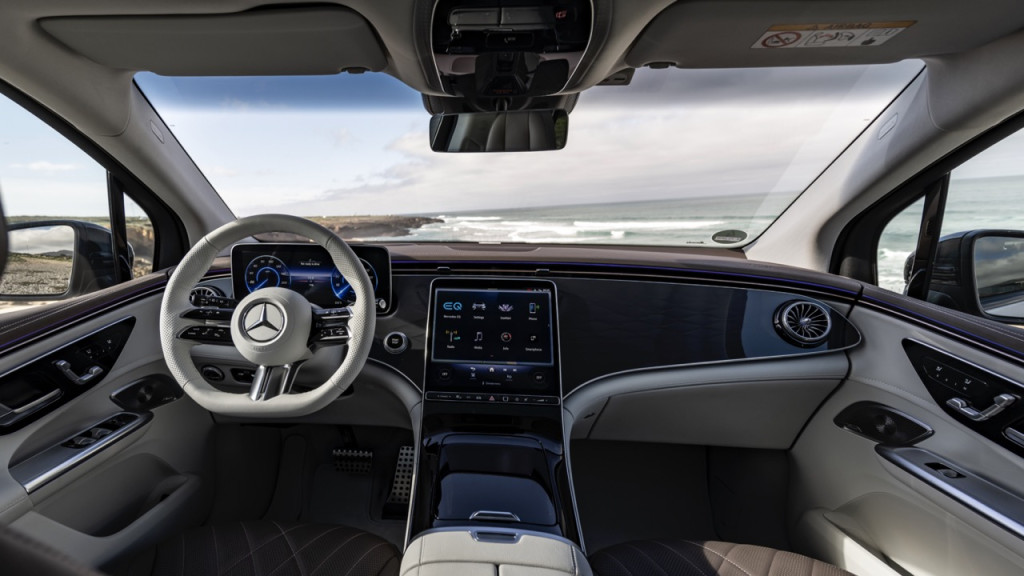
2023 Mercedes-Benz EQE 350+ SUV
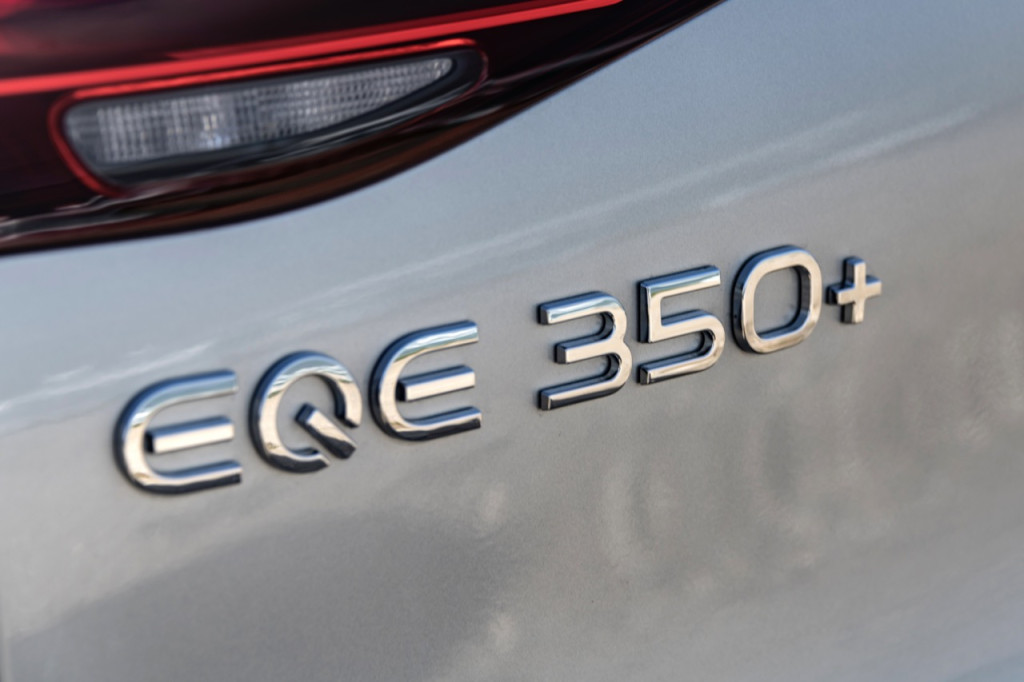
2023 Mercedes-Benz EQE 350+ SUV
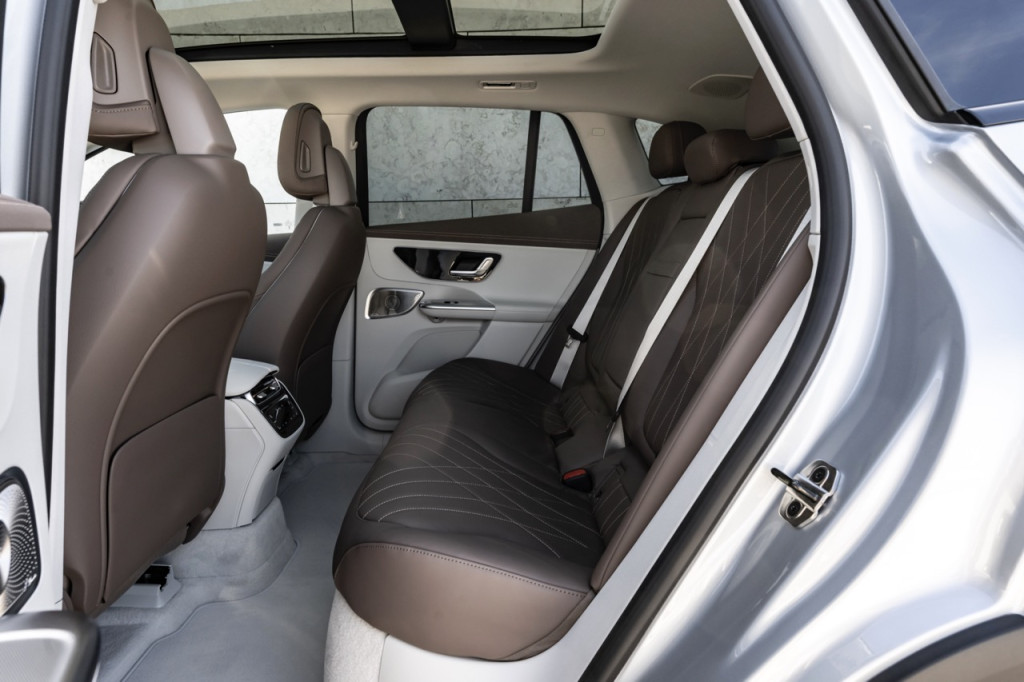
2023 Mercedes-Benz EQE 350+ SUV
The EQE SUV has one of the most refined electric-vehicle interiors, with its mix of laser-cut metal, nappa leather, and four different sound programs.
What is the 2023 Mercedes-Benz EQE SUV, and what are its rivals?
Scan the five-seat electric SUV landscape, and crossovers from the BMW iX and Tesla Model Y come forward as EQE SUV competition; so do the upcoming Audi Q8 E-Tron, Polestar 3, and Volvo EX90. Spun from the same skateboard as the EQS Benzes, it’s sort of a rival for the EQS SUV, if you don’t really need that vehicle’s third-row seat.
Like the EQS SUV and EQS and EQE sedans, the EQE SUV takes a more conventionally bulbous approach to slippery aero SUV design than, say, the truly daft BMW iX. The Benz avoids all the fusty off-road cues of the ICE vehicles in its family (they all start with “G”). Here, the shape looks progressive and mostly graceful, though there’s a distinct line drawn between those who don’t mind the heroically sized three-pointed star on the nose and the triangular flag stranded in front of the sideview mirrors, a consequence of the cab-forward shape. It does its wind-cheating job and leaves the interior to make the signature design statement. Warmly blended from high-definition screens and traditional textures from leather to aluminum, the EQE SUV cockpit doesn’t need the extravagance of the Hyperscreen environment to state its case.
The EQE SUV, by the way, has a 119.3-inch wheelbase, and sits 191.5 inches long in all, which grants it five-adult seating with headroom and legroom to spare. In the U.S., Mercedes will stick with heated and cooled front “comfort” seats, while firmer bolsters await a future AMG edition. These rise to the Volvo standard, with padding that’s soft enough to bring on a nap, given the right amount of jetlag. The same holds true in back where even the panoramic roof can’t erase all the space above a 6-footer’s head. No official cargo specs have been published for the U.S.-bound versions, but the EQE SUV I drove could easily take on four or five roll-on bags with space for a soft-sided satchel or two to spare.
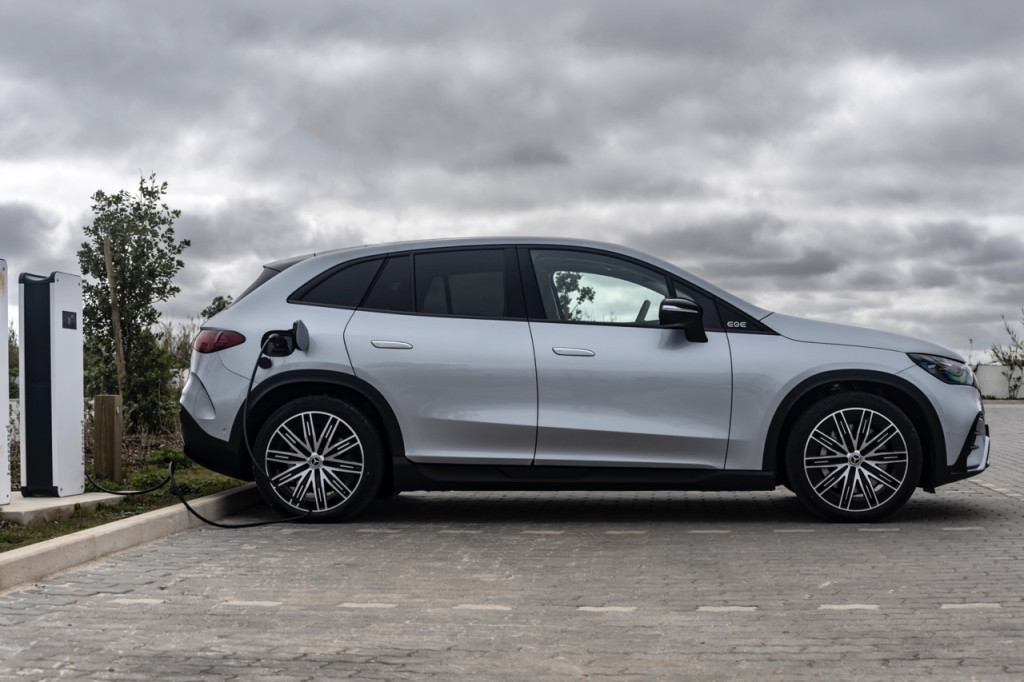
2023 Mercedes-Benz EQE 350+ SUV
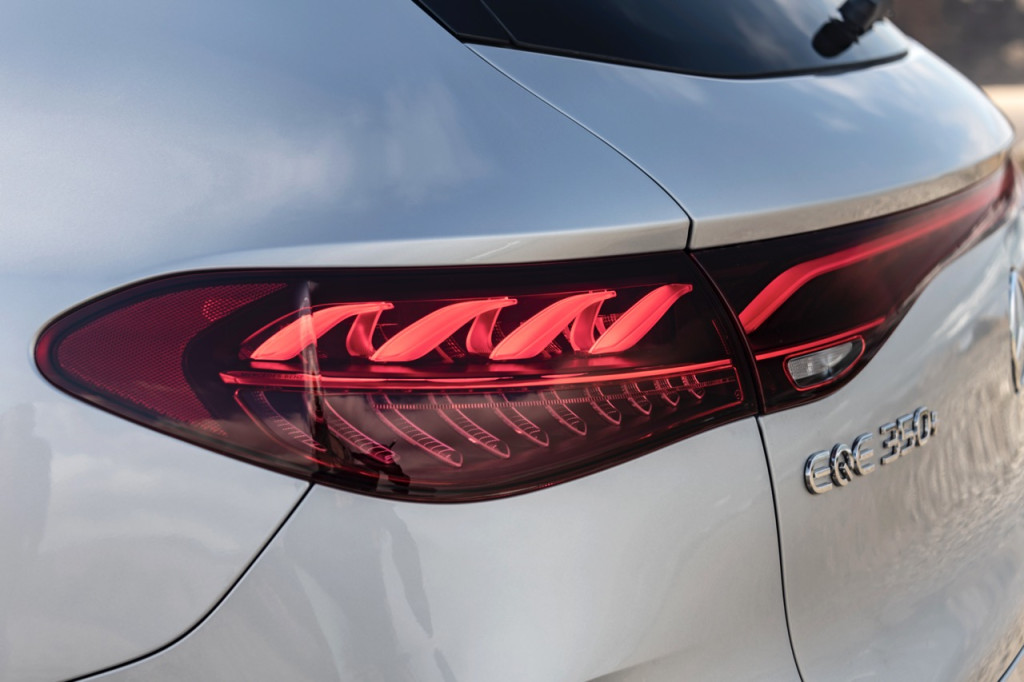
2023 Mercedes-Benz EQE 350+ SUV

2023 Mercedes-Benz EQE 350+ SUV
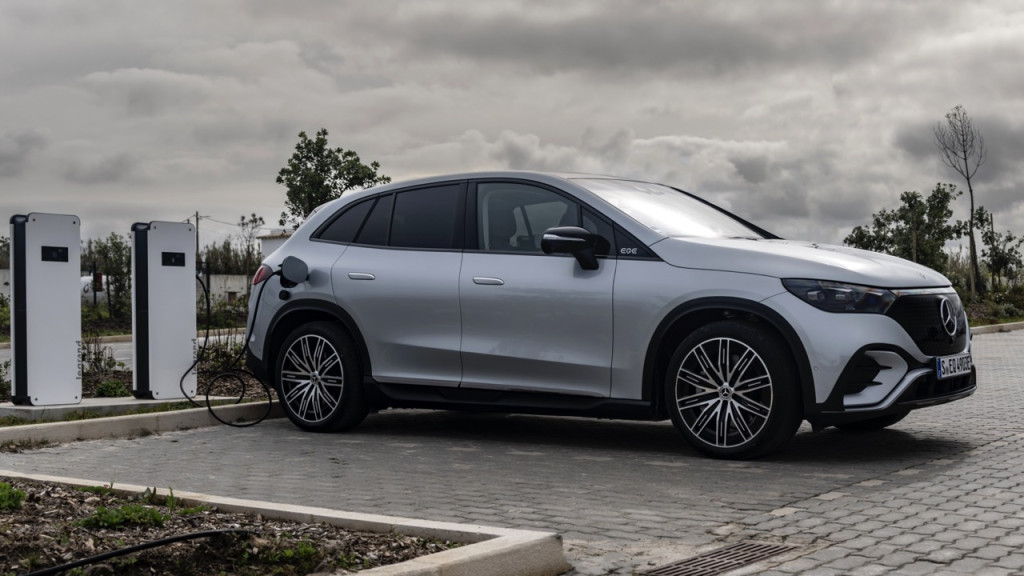
2023 Mercedes-Benz EQE 350+ SUV
The EQE SUV’s 90.6-kwh battery pack shrinks compared to the EQS SUV’s unit, but still stores enough energy for up to an estimated 279 miles of range.
How efficient is the Mercedes EQE SUV, and how can it be charged?
No perfect storm swelled offshore while I drove, just bright sunshine and light breezes to dance across the EQE SUV during a moderately paced test drive that showed it off at its most efficient.
With no official EPA range and efficiency ratings, the EQE SUV gets Mercedes’ estimates of 279 miles max for the EQE 350+ SUV, which drops to 253 miles with the addition of a second electric motor and the swap-in of all-season tires. If efficiency is the sole goal, the rear-drive 350+ is the one to beat—and yet, I saw a test-drive-best 3.0 miles per kwh when driving a 350+ 4Matic.
That’s well shy of the promises made by Lucid for its Gravity, or the reality of today’s Tesla Model Y, but it’s a considerable accomplishment. Aerodynamics play a big role, and the EQE SUV has smooth moves with a Cd of 0.25. So do ancillary helpers, such as the standard thermal system, incorporating a heat pump, that helps to extract more range from the battery, capturing waste heat from the drivetrain to warm the cabin.
Range is one consideration, but charging ultimately could be more important to anyone comparing the EQE SUV to other electric vehicles. A Level 2 240-volt home charging setup at 32 amps can refill it in 9.5 hours, with the aid of a 9.6-kw onboard charger.
On the road, charging becomes more of a thorny question. While Mercedes plans its own EV fast-charging network, it will supply the EQE SUV with two years of unlimited DC fast-charging, in 30-minute increments, at Electrify America stations. On an EA station that can output the accepted peak of 170 kw, its 400-volt charging setup becomes a time suck: The EQE SUV will take 32 minutes to recharge from 10% to 80% of its battery capacity.
It’ll be a while before Mercedes buys into the 800-volt charging built into most of the latest competitive EVs. Chief technology officer Markus Schäfer says while Mercedes presses ahead with a Level 3 driver-assistance system and hopes to enable Level 4 autonomy by the end of the decade, higher-speed charging is a lower priority at the moment. “Eight-hundred-volt [800-volt charging] is not the target,” he said via webstream during the EQE SUV press launch last week near Lisbon, “customer experience is the target.” Schäfer predicts by 2025 there will be a “sufficient number of 800-volt charging stations around the world” to make it a priority, and in the meantime, Mercedes will “save the weight, save the cost.”
In other vectors of performance, the EQE 350+ SUV comports itself well, though it doesn’t lead in straight-line acceleration: its 90.6-kwh battery pack in single-motor configuration can generate a 0-60 mph time of 6.3 seconds, a couple of seconds slower than a Model X or Model Y (but with a 3.4-second AMG edition in the offing). Outfitted with an adaptive air suspension and driver-selectable modes, as well as rear-axle steering, the EQE SUV fares better at sweeping through deep bends in the road than it does when dancing around hairpins. It leaps to attention upon steering inputs and cuts in eagerly when that rear-axle steering is fitted—but at more than 5,500 pounds, the EQE SUV relies more on technology than geometry to get the handling job done.

2023 Mercedes-Benz EQE 350+ SUV
No Hyperscreen here, but the EQE SUV gets digital gauges, and a 12.8-inch touchscreen with navigation and wireless Apple CarPlay/Android Auto.
Does the 2023 Mercedes-Benz EQE SUV qualify for IRA tax credits?
Since it’s built in Tuscaloosa, Alabama, alongside the EQS SUV, it does, in part. That plus its price means the base EQE SUV makes the EV tax credit cut—at least for $3,750 of it. The other $3,750 might apply, depending on when its U.S.-made battery packs will get domestically sourced cell materials. (More details on the tax credits will be announced on April 18.)
At $79,050, the EQE 350+ SUV wears synthetic leather upholstery and 19-inch wheels, has a 12.8-inch touchscreen and a 12.3-inch digital gauge display, and suits up with heated front seats, a panoramic roof, and Burmester audio with Dolby Atmos. Its sub-$80,000 price qualifies for the latest federal electric-car incentives, even if that amount from next month is lower. For anyone interested in driving electric, buying something built in the U.S., and cutting their tax bill, this EQE SUV will check a lot of boxes, even if 300 miles of range isn’t one of them. With its 279-mile mooted max rating, the 2023 EQE SUV pitches itself toward homeowners and others who will be able to install their own charging solution—as well as to those who have close, reliable Electrify America stations.
Is that enough? The EQE SUV surely fares better than, say, Audi’s first attempt at a long-range battery-powered SUV, the E-Tron. We still liked that vehicle enough when it was new to name it our Best Car To Buy. (Over at The Car Connection, we give the 2023 Mercedes EQE SUV a TCC Rating of 8.2 out of 10, with high scores in comfort and quality, as well as efficiency.)
The world may have changed, and a tidal wave of new electric vehicles has reset the expectations for performance in all kinds of ways. It exceeds those expectations in utility and technology—and even on the range and charging front, the EQE SUV is no wipeout.
Green Car Reports accepted travel expenses to Portugal in order to bring you this test drive of the 2023 EQE SUV.

